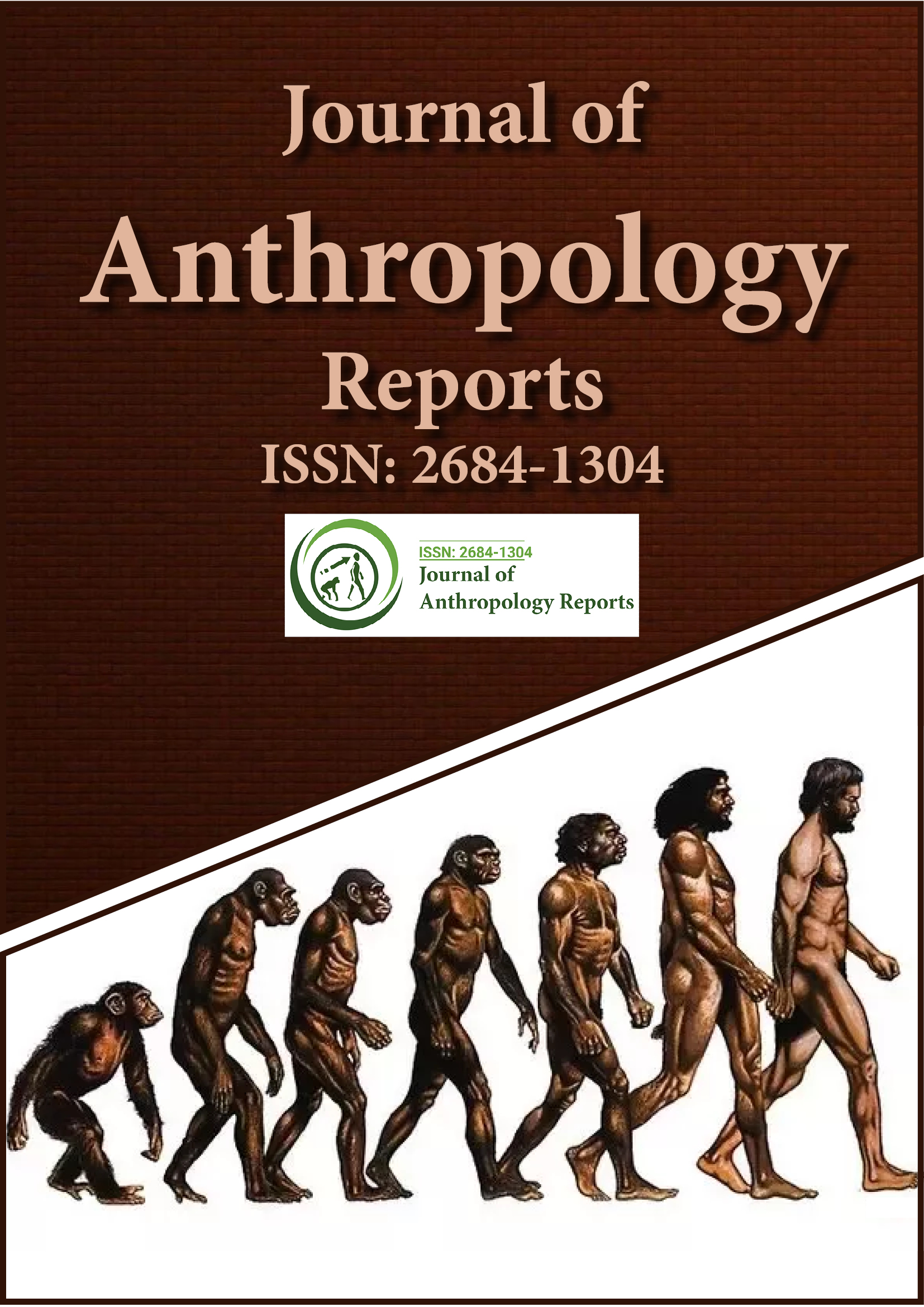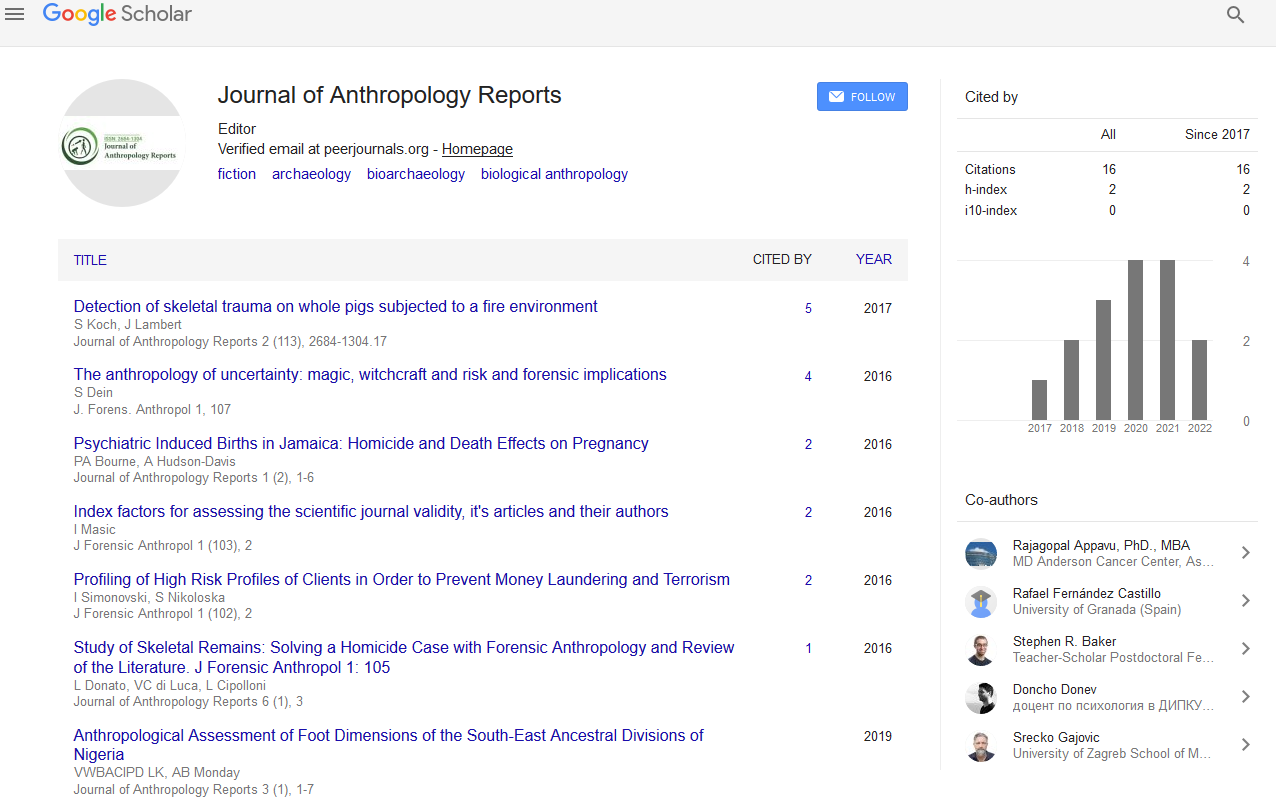Indexed In
- RefSeek
- Hamdard University
- EBSCO A-Z
Useful Links
Share This Page
Journal Flyer

Open Access Journals
- Agri and Aquaculture
- Biochemistry
- Bioinformatics & Systems Biology
- Business & Management
- Chemistry
- Clinical Sciences
- Engineering
- Food & Nutrition
- General Science
- Genetics & Molecular Biology
- Immunology & Microbiology
- Medical Sciences
- Neuroscience & Psychology
- Nursing & Health Care
- Pharmaceutical Sciences
Opinion Article - (2023) Volume 6, Issue 2
Burned Bones as a Significant Forensic Evidence in Crime Analysis
Asish Cunningham*Received: 12-Jun-2023, Manuscript No. JFA-23-21905; Editor assigned: 14-Jun-2023, Pre QC No. JFA-23-21905 (PQ); Reviewed: 28-Jun-2023, QC No. JFA-23-21905 (QC); Revised: 05-Jul-2023, Manuscript No. JFA-23-21905 (R); Published: 14-Jul-2023, DOI: 10.35248/2684-1304.23.6.156
Description
Forensic anthropology has arisen out to be another exploratory part of scientific science. While forensic anthropology is concerned with the application of anthropological theories and methods into legal action, this subfield of physical anthropology focuses on studying the evolution and diversity of primates with a primary focus on Homo sapiens. Burning a crime scene or phenomenon is the simplest method of concealment and destroys evidence; consequently, burned bones have become one of the most pressing areas of investigation in recent years. The primary piece of bones has fundamental impact in the warm impact of the crime location. The organic component of collagen type 1 and the inorganic component, primarily Hydroxyapatite, make up the bones. The response of intensity on the bones follows a successive cycle, these stages incorporates lack of hydration, deterioration, reversal and combination. The changes in the bone's structure and composition are used to classify the stages.
Shape, composition, shrinkage, weight change, and dimension change are all examples of these changes. Colour shifts from dark brown to black, black to gray, and finally white accompany the sequential process. The variety has been viewed as a dependable sign of temperature, the variety might shift as per length of openness, and contrast in intensity and fire communication, inside and outside openness of bone will show a distinction in variety varieties too. New techniques, such as X-ray imaging, X-ray diffraction, small-angle X-ray scattering, FCIS, micro CT scan, micro structural analysis of bone, BV/TV content analysis, C-I index, thermogravimetric, SEM, and TEM, are being used to investigate the connection between burned bones and the temperature effect. Because of its physical properties, mammal bone is an important artifact for determining death conditions and age at death.
Preliminary examination
The morphological and colour change studies are part of the primary examination of burned bones. A number of significant changes occur in the structure, composition, size, shape, and colour of the bone as muscle tissue is shed and the bone is finally exposed to heat and fire.
Secondary examination
The distinct stages of cremation are dehydration, which occurs at a temperature of up to 600°C and results in the breaking of hydroxyl bonds. Decomposition, which occurs at a temperature of 500°C to 800°C and results in the removal of organic material, is the second stage. Third stage is reversal bringing about loss of carbonate with a temperature scope of 700°C-1100°C. The last stage is eluded as combination with warming temperature above 1600°C and noticeable changing in softening of gems. Using a similar method, they found that calcined bone shrank by less than 3% at an average temperature of 700°C. They also found that the degree of shrinkage varied depending on the size of the bone, with most of the shrinkage occurring at the epiphysis. He additionally called attention to the irregular game plan of collagen fibre as element of high shrinkage related with tubercular district. In addition, the structural observations were not visible when heated to 800°C as was investigated; however, contrary were still able to see the Haversian canal system even at high temperatures of 800°C -1200°C and were able to differentiate between human and nonhuman bone. A similar finding has likewise been reported by with the checking electron magnifying instrument to examine human bone. Intriguingly, there are additional methods for identifying burned bones; one of them is the estimation of capability of Crystallinity File (CI)-or parting factor.
The CI estimates the request for synthesis and translucent construction with in the bone. The hypothesis proposes that as CI rises, crystal size also rises and becomes more ordered.
The cycle is emphatically impacted by digenetic pathway, enduring and heat. The instrumental investigation of CI incorporates through X-Beam Diffraction (XBD), little point XBeam Dissipating or Fourier Change Infrared Spectroscopy (FCIS) years. It has been demonstrated that the size of the crystallite is influenced by the heating temperature and bone exposure.
Comes next by is an alternate sort of study including the miniature underlying examination of bone will proposed that the size of osteon diminishes with expansion in the temperature anyway it was gone against by the comparative sort of study. In addition, it can be seen that even at temperatures as high as 600° C-900°C, bone microstructures can be used to estimate age. They can use this method to distinguish between fossilized and burned bones.
Citation: Cunningham A (2023) Burned Bones as a Significant Forensic Evidence in Crime Analysis. J Anthropol Rep. 6:156.
Copyright: © 2023 Cunningham A. This is an open-access article distributed under the terms of the Creative Commons Attribution License, which permits unrestricted use, distribution, and reproduction in any medium, provided the original author and source are credited.

